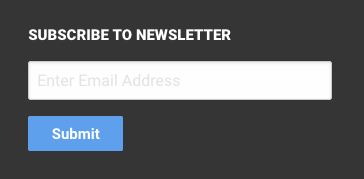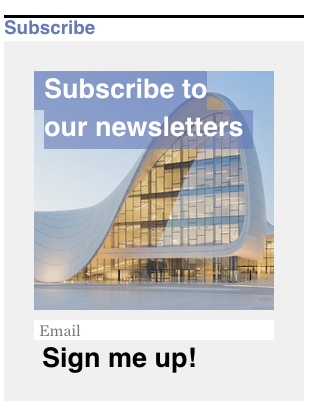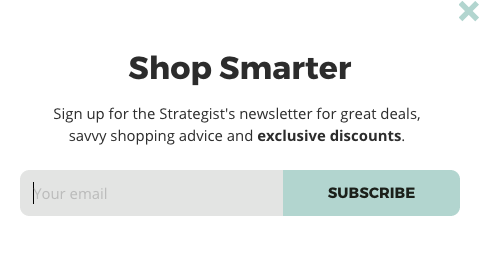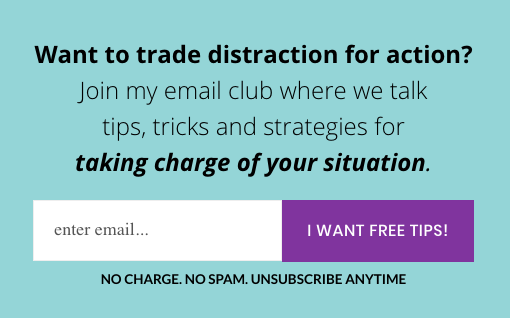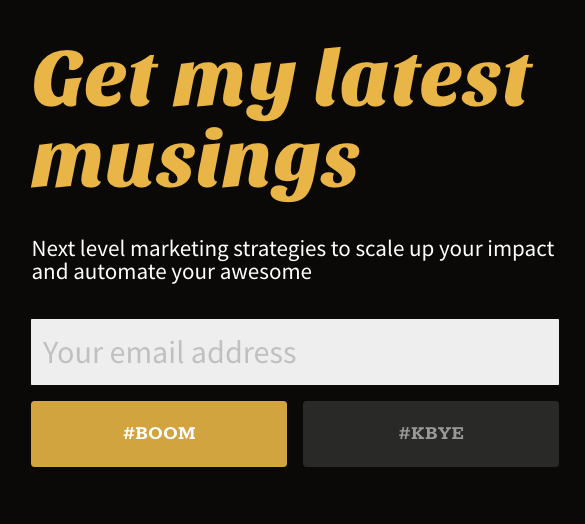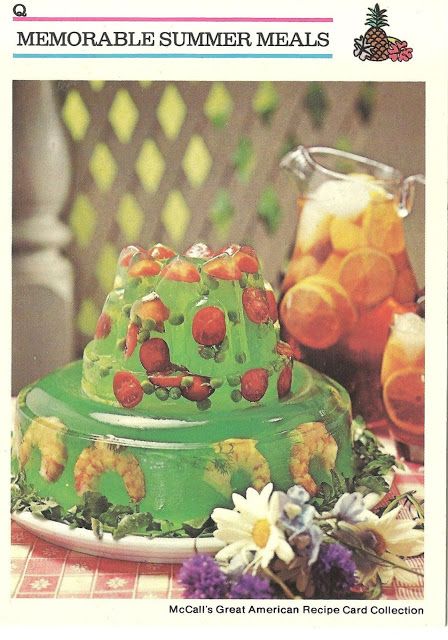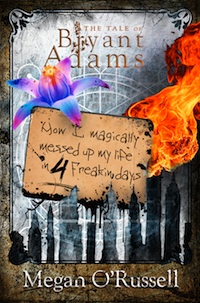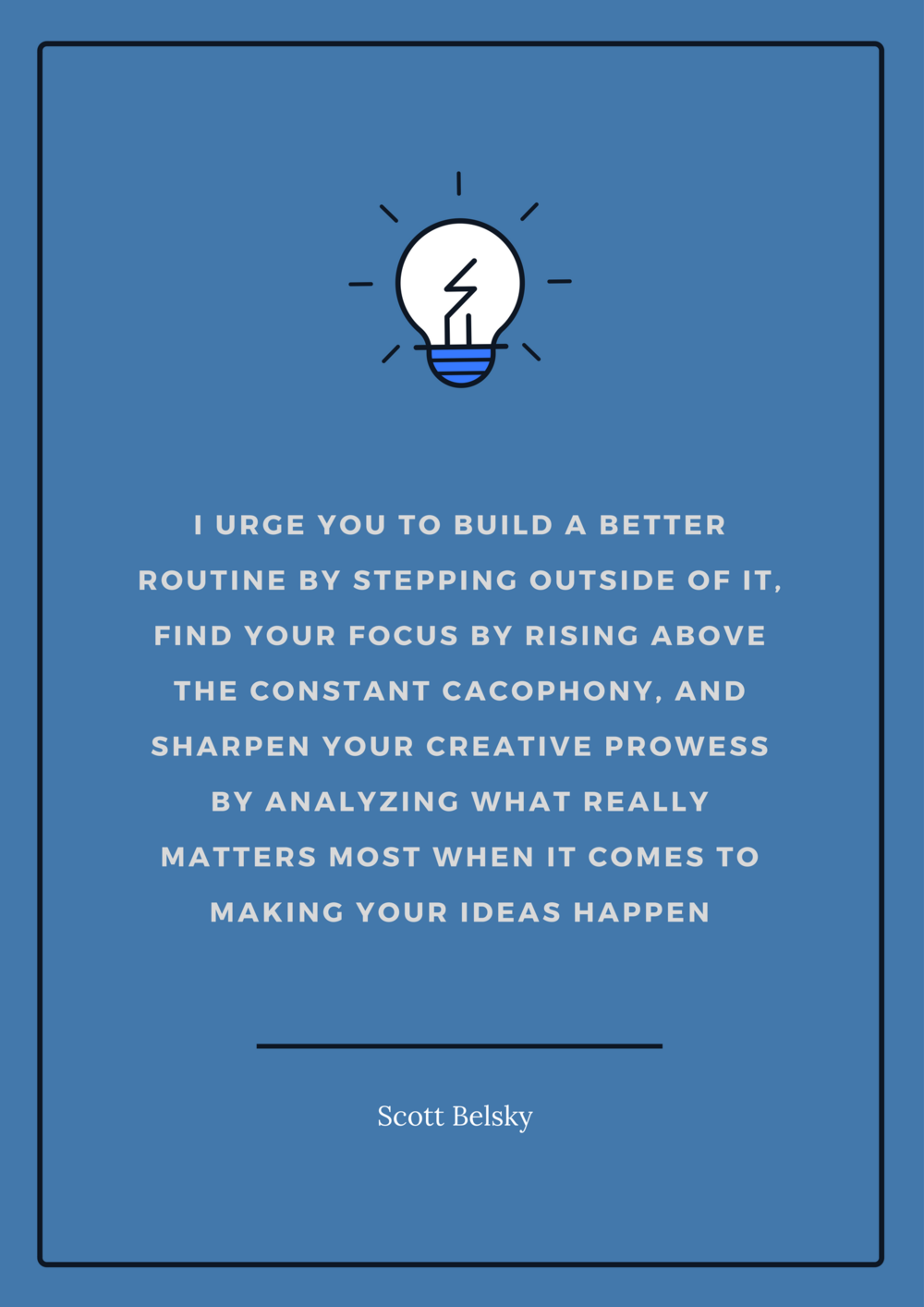The persona is dead. Long live the persona.
Some marketers have claimed that the persona is more over than a Hyper-Color T-shirt, more useless than a man's nipple, more dead than social graces. Deservedly so, when personas are in the state they're in now. But if you care about understanding your customer and improving their experience with your brand, it's a worthwhile part of your strategy.
Some marketers make such a dog's breakfast of personas (and I'm talking about a feral dog that eats in alleys or by a wharf; maybe a coyote's breakfast would be more apt) that I have to wonder if they're unable to see the people in their own lives as living, breathing humans.
Most of the personas I see, even from people who teach workshops on the subject, are about as interesting and relatable as a cardboard box left out in the rain. (That said, you could make that box enormously sympathetic.) With a B2C persona, you see a motivation of "likes to try new foods," and a goal of "purchasing products." With B2B, you often see the motivation of "getting products to market faster." How is that supposed to help?
I'm not saying that your persona's work-related struggles shouldn't be a part of what you're creating. But there has to be more to her to that, and I'm going to tell you how you can make her more three-dimensional, why you should bother, and how it benefits your company.
Creating a persona is a dynamic process. You start with what you know and what you can infer about your top customers, and refine your persona over time as you learn more.
What's the Purpose of a Persona?
The real purpose of a persona is to improve the customer experience.
A better experience for your customer leads to higher conversion rates, more repeat business, and increased revenue and profitability. (If you're into that kind of thing, and I'm pretty sure you are.)
A Cintell study on audience personas found that “companies that exceed lead and revenue goals were 2.2X more likely to have and document personas than companies that miss these targets.” A company that uses personas is far more likely to have a strategy in place, and companies that have even a simple strategy are much more likely to exceed their revenue goals than companies that don't.
Moreover, understanding and empathizing with your customer through personas will help you create useful and valuable content for her, improve her experience with the brand, build trust, and foster delight. Overall, this generates revenue and informs product development.
When you build a persona over time from sources like data, insights, observation, listening, and interaction, it makes it easier to create stories, it makes those stories stronger, and it makes those stories much more relatable to your customer.
And using a (non-crappy) persona lets you strengthen your brand messaging to signal a particular customer or attract a new segment of customer.
A Persona Guards Against "Marketing Nihilism"
Creating a three-dimensional persona guards against "marketing nihilism."
In marketing, you can start thinking like Baudrillard: despairing, apocalyptic. Nothing feels real. It seems that everything that was real has been replaced by a hyperreality (as Stephen Wright said, "replaced with an exact replica"). You suspect there's no system because there's no reality. Using a persona can help with that (to some extent, anyway).
Using a three-dimensional persona concentrates your target audience into one person. When that person seems real, you can focus your attention on reaching her and delighting her. It's not a nameless, faceless crowd. Instead of diffusing, you're clarifying.
In non-profit fundraising campaigns, people donate more when they can emotionally imprint on one person's story, so they focus your letter on one person, not an anonymous number of people the reader can't connect to. Same concept.
What if you happen to be working for a company with an audience you're having a hard time connecting to? Create a persona you can use as a touchstone to connect to your customer, and keep her in mind when you create content. Find a few good customers and go from there. Creating a persona you can relate to will help you create content in a difficult environment.
How Can I Create a Persona That’s Not an Event Horizon of Suck?
... Especially With A Low Budget?
Maybe you don't have a generous budget and haven't been collecting all kinds of sweet, sweet data from fancy-pants software. If you do have that, awesome. Use whatever data you can find. Just know that data can get you only so far, and can be misleading (like surveys). It's the connections between and among data points, like synapses between neurons, or a conspiracy wall using yarn and pushpins, which give you the insight into your customers.
If your budget feels like a hell dimension where budgets are measured in pennies, rely on whatever you can get from Google Analytics, email list information, and surveys (though be careful with those; they’re limited in their usefulness, could lead you down misguided paths, and should be applied only in certain situations—where they could be very helpful).
You should also use any feedback or communication you have from customers, and you may also want to look up some of your customers' websites or social media feeds to get an idea of what they're like, and what else they're reading or talking about.
For the budget-restricted, you can also think of a competitor with a similar audience and do some reconnaissance. You can't see their data, but you can learn more about your target audience by looking at theirs. Read their blog comments if they have an active blog, and note any questions, problems, fears, pain points, and more.
Do Some Field Work
Ideally, though, you'll go out and talk to your customers directly. Give them an incentive to talk to you on the phone (it's always good to give people some sort of consideration for their time). Go do some ethnography. The insights you can derive only from direct observation or interaction will let you realize things about your customer and their experience with your brand that you absolutely could not have realized any other way.
They Need Water to Survive!
For the love of puppies and Grantchester, please do not give your persona so-called traits that all of your customers, and everyone in most developed countries, happens to have—e.g., she's busy, she's comfortable shopping online, she's annoyed by slow websites. These are not things that will help you signal customers or relate to them or delight them. This is everyone in the modern world, with the exception of people like Ron Swanson. Remember that the ideal result is to make the persona seem real to you and to others, and to be able to internalize them.
Going Back to Data...
With Google Analytics, you've got basics like demographics, behavior, and favored content that you can use. If your budget allows for lead nurturing software, that's another layer of data. There's also industry-specific data. For example, the Public Library of Cincinnati worked with an agency that developed marketing personas based on library card usage data to create targeted email marketing.
This 30 Rock scene between Jack and Jenna combines both explicit and implicit data :)....
30 Rock, "Jack Meets Dennis" #106
Jenna: What’s too old?
Jack: That’s a very good question. How old are you?
Jenna: I’m 29.
Jack: What year were you born?
Jenna: 1977.
Jack: When did you graduate high school?
Jenna: ‘94.
Jack: When do you turn 40?
Jenna: 2017.
Jack: Junior high crush?
Jenna: Kirk Cameron.
Jack: Prom theme?
Jenna: “Motown Philly” Boyz II Men.
Jack: What movie did you lose your virginity to?
Jenna: Arachnophobia.
Jack: Theater or drive-in?
Jenna: (hesitates and plays dumb) What’s a drive-in?
Jack: Of course. I don’t know why I bothered to ask. I can tell just from your physical appearance that you’re obviously … 29.
Use Multiple Data Sources
Whatever your situation is, pull what data you can from multiple sources. According to Cintell's Understanding B2B Buyers Benchmark Study, high-performing companies use a variety of methods to compile insights about their buyers, while their underperforming counterparts reported using fewer sources of data.
Whatever the case, you form a holistic, coherent picture of a persona that actually resembles a human being that people can remember, relate to, and internalize.
Give this persona a name. A real name, not title + name, like "Techie Tom" or "Enterprise Linda" (though if you're ever having trouble with customer service at an enterprise company, just demand to speak to Linda). A title + name is like a bow fender for relating to a persona—it forces a slight amount of distance for empathizing with them and connecting to them. Imagine calling any of your friends the equivalent of "Finance Manager Stephanie" or "Entrepreneur John."
I like to look through the top 100 names for a persona's birth year or decade and pick one that seems like a good match.
Goals, Motivation, and More
What does your persona want? Here's a tip: it's way more than "to discover a new beverage." Is that all you want from life?
Sure, sometimes all we want in the world is to get a 16 oz. coffee, and woe to anyone who dares get in our way—and you'd think that's all someone wants from most of the personas I've seen. And yes, we all have multiple small goals during the day. To have lunch, for example. (And those can be powerful enough to write a story around.)
Of course work-related goals or motivations are important (and you may want to incorporate Christensen's Jobs-To-Be-Done framework with your persona/s).
But think bigger. Think life goals. Do they want a happy family life, professional achievement, to be of service to others? Maybe it would help to think of it in terms of an "I want" song from a musical, like "Part of Your World" from The Little Mermaid. Once you figure out what's most important to her, you can get into more detail with work-related goals and motivations. And by detail, I mean, specific detail, with challenges that are similar to what a friend would tell you.
Flaws and Worldview
What flaws are keeping her from getting what she wants? I like to refer to the Enneagram as a starting point. Use it to get a better understanding of how a particular Enneagram type thinks and acts on a scale of healthy to unhealthy, and the flaws that affect each type. Is she caring and generous, but manipulative? Is she a cerebral visionary, but at the expense of reality or physical activity? Is she versatile, adventurous, and multi-talented, but indecisive and scattered? Is she a conscientious perfectionist, but resentful and critical?
What does she fear? Disorder? Rejection? Failing professionally? Being alone?
What worldview or philosophy does she have that you can put into one sentence? A hedonist would have a very different worldview than a perfectionist, an outdoor adventurer would have a very different worldview from someone who's anxious and paranoid, and an emotional aesthete would have a very different worldview from someone who's pragmatic and relaxes with spreadsheets.
In Maslow's Hierarchy of Needs pyramid, safety needs are the second biggest layer, right after physiological needs such as food, water, warmth, and rest. Safety needs are expressed in different ways. Someone who's adventurous and open to risk might be afraid of making the wrong choice in terms of what's best, so they may want to try multiple options. Someone who seems to be a consummate risk-taker—decisive, confident, tough—might be safety-minded in terms of how this decision will affect their stature or how it can make them vulnerable. And someone else might be safety-minded in terms of their mood or emotional state.
Consider another layer of the triangle: esteem. What is esteem to your persona? Maybe it's knowledge in a particular area, or knowing how to do something. Esteem is how your customer perceives herself, and what matters to her. It's a great exercise to go through Maslow's Triangle and think about how each layer specifically pertains to your persona.
Other Brands and Media
You should have a good idea of what your persona watches, listens to, reads. You should know what's nostalgic for her. You should know what other brands she likes and trusts, where she shops, what websites she reads, who she admires. Some of this will be inferred, and you'll iterate over time.
Dayparting Content
Personas can help with dayparting your content and brand messaging. If you can imagine your persona's typical day, this will help you create content that's meaningful, interesting, and relevant to her. As you refine your persona, you'll get ideas for dayparting content and connecting your brand to her days and lifestyle. You'll know what kind of content she wants to take in, and when, and how.
It may not be feasible to put on a trenchcoat, sunglasses, and a hat and follow your top customers around all day. For a starting point of how people (in the US, at least) spend their time, take a look at the American Time Use Survey. One data visualization based on the ATUS shows a simulated day for employed Americans in various occupations. Another data visualization of time use simulates a single day for 1,000 Americans representative of the population, to the minute (it’s from 2014, but still useful). Or go right to the source of the American Time Use Survey.
Creating a persona isn't too dissimilar from creating a character for D&D. You define your bonds, flaws, ideals, personality traits, etc—and flesh out your background. You also figure out how your character spends their R&R between adventures.
As a fiction writer, I've definitely gone overboard when creating characters, and after a certain point, the information becomes overwhelming. Your persona should seem real to you, but don't be excessive in a way that makes you or your team carry too much mental weight that doesn't actually contribute to anything.
Using Your Persona to Create Experiences
Understanding your persona will also help you create the right experiences for your brand, which should be a integral part of your brand strategy. This connects to what your customer values, how she wants to transform herself, and how she engages with your brand. Girls' experience with the American Girl brand is a great example.
Anthropologie specializes in one customer, and uses personas (whom they call "our friend") to help create a store experience. The buyer (for the company) can go around the world and know that the Anthropologie customer will love this bird cage, or that jacket, or a journal. Most of the objects create an experience around their most popular product, clothing. How does their friend want to feel? What kind of person does she want to be? Remember the J. Peterman catalog? They were masters at this, using only copy and watercolor illustrations of the item of clothing to create a fantasy of an experience.
Aside from the experiences that your brand supports—whether that's adventure, connecting with friends, being more organized and productive, making her smarter, making her a better citizen, making her healthier, making her feel happy or inspired or rewarded, etc. (and knowing why your experience matters to her)—there's also the more defined experience of what it's like to buy or use your product.
IDEO would go step-by-step through a user's experience to reduce friction and frustration wherever possible, and to make things faster, easier, and more convenient. I strongly recommend going through the same process using your persona. What would frustrate her, try her patience, or make her feel overwhelmed or pissed off? What would delight her, impress her, make her experience with your product or service better? I frequently wonder if the people behind a product or service have ever actually used it themselves, and I wonder this when something is annoying me or pissing me off. That's not how you want your customer to feel.
When You Shouldn't Create a Persona
The Empathy Problem
Marketers have all heard the word "empathy" thrown around like the fake Santa who drives through my parents' neighborhood tosses candy to people standing on their driveways.
Some companies will never develop empathy, because the founders never had it in the first place. Some companies lose empathy as they grow. Examples of businesses that typically lack empathy include doctor's offices, general contractors, airlines, and most government offices, though it's pretty common with SaaS companies, too—even those who are under the deeply mistaken impression that they have it.
Whether it's the online UX, the product experience, or the service experience, companies that lack empathy make it obvious at every possible step of interaction. That's not just because they made the terrible mistake of not creating a three-dimensional persona—it's a cultural problem, and the result is that some work cultures will support using a persona more than others.
The "It's for Everyone!" Problem
A huge problem in very early-stage companies is that they're so eager for more customers, they make their value proposition all-encompassing and generic. Who's it for? "It's for everyone!"
This is a problem in companies of all sizes, but whatever the case, they're afraid to focus because they think it'll reduce the potential firehose of the top of their funnel to a straw—and they're afraid of alienating potential customers. That's a topic for another blog post, because I have a lot to say about that.
For now, I'll add (via ITSMA) that 82% of companies using personas have managed to create an improved value proposition, which isn't surprising to me at all. Your value proposition signals a particular customer and tells them that your offer is the solution to their problem. If you have a persona in mind, it makes your value proposition considerably stronger.
The Narcissist Problem
A common accompaniment to the empathy problem and the "it's for everyone" problem is the narcissist problem. If your company operates from a product-first rather than customer-first viewpoint, then it's likely your persona will be one of those default profile heads with the title "Prospect."
Doing personas right requires that you care about understanding your customer and improving their experience with your product or service. If that's not something you're interested in, don't bother creating a persona. It's going to suck, anyway.
And lastly, don't bother creating a persona if you're never going to question your assumptions and stereotypes. You won't be doing yourself, your company, or your customer any favors. Be open, receptive, and curious when it comes to learning more about your customers.
Using Your Persona
Copywriters know that people buy from emotion, not logic. Objective facts are used only so the buyer can justify a purchase based on emotion. Your persona will help you connect to that emotion and underlying motivation—and you can use the same persona for all stages of the buyer's journey and stages of awareness.
Ben & Jerry's used their persona for every element of their business (and they were definitely not afraid to focus).
Product Development
Your persona can help guide product development. For example, when Capital One needed to market a portal to developers, they used personas in the product development phase and in user testing.
Website Lead Gen
Using a persona (a specific, three-dimensional one) will help you hone the advantages and benefits of your product's features, and with the tricky situation of targeting different customer segments. Focus on your primary persona and use navigational links to lead your secondary segments to their content. If someone is visiting your site for the first time, they have very little tolerance for the wrong kind of content. A persona-based website saw 210% increase in website traffic, 97% increase in website generated leads, 124% increase in website generated sales (MarketingSherpa).
Adobe saw a 10% increase in email orders, a decrease of 78% in time-to-market, a 59% increase in web visitors, and a 53% increase in web revenue with a persona-based launch (SiriusDecisions). Pretty awesome.
Content Development
Once you create your persona as a part of your strategy, you can use it for editorial development. When you're working on your content creation plan for the quarter or for the year, you'll know (or have a pretty good idea) if your persona will like something or not. Over time, knowing what your persona will like, dislike, or feel neutral toward will be second nature.
A persona will help you be creative with lead magnets and content offers. What would be most valuable (or useful / fun / interesting) to her? What form should it be in?
Knowing your persona lets you more easily make decisions, and to say no to product or content ideas that don't make sense.
Next Steps in Creating Your Persona
If you're managing a content team, share your full persona/s with everyone who's involved in the content creation process. You may want to expand that to anyone involved with creating an experience for the customer.
You can make secondary persona tools—a "pocket" version of your persona—for folks in other departments so everyone can stay unified. It's worth the time to create a more pared-down version for people that helps them use the persona to support company goals and understand what you're talking about in chats and meetings. As a manager, you should know how the people you lead like to receive information (just like you'd know when it comes to your persona).
The goal is to get people to internalize the persona. I know it's not easy. If you're a solopreneur or have a small team, this isn't an issue. With a larger company, you need to put more effort into communicating the benefits of being familiar with the persona.
Look to other industries for inspiration on how to make that fun. Can you work with your designer to make cards inspired by early 70s-era Wacky Packages, 60s-era Mars Attacks trading cards, or Archie McPhee's Super Awesome Trading Cards?
How else can you make it fun? Posters, mini comics, a "day in the life of" guide, an interactive element, a pinboard, games, a "conspiracy board" (a fresh way to look at dayparting / day in the life of).
People on a marketing team are likely to forget a persona exists unless you take steps to keep her front-of-mind. To make her more memorable in the minds of your team, create your persona in the form of a story, and use good visuals. For photos, look at Unsplash, Picography, and Gratisography (for the quirkier persona).
Make your persona/s a regular part of your meetings. Weave them into the conversation where it makes sense. Don't wedge it in and hammer it like you're taking down a tree.
Make personas fun for your team—not a chore or a burden—and for anyone involved in using them, and I think you'll find that this helps to keep your culture customer-obsessed. Take your team on field trips to practice, and to use the insights and observations they take from the field. Keep in mind that the persona guides how you create content and improve experiences for your customer, but it doesn't impose or dictate.
If you don't keep your persona in the minds of your team and anyone else, guess what? She stays on the page. And if you bring her up once in a proverbial blue moon, people won't know what the hell you're talking about.
You may want to consider a persona tool called an empathy map. This takes what you ideally should already know about your persona, but presents it in a more easily and quickly understandable form for a more narrow use case. You put Post-It notes in a four-part grid: how she's feeling, and what she's thinking, saying, or doing—and what her goals are in relation to your user experience process. An empathy map isn't a replacement for a persona (though many marketers don't do even this much). It's a useful exercise where you take your three-dimensional persona and apply what you know to a more specific map.
Finally, be open, observe, and listen. Leave the office and go where your customers are.
Personas aren't dead. They can be a fun and extraordinarily useful tool for learning about your customer, staying customer-focused, and finding ways to delight your customer at every touchpoint and interaction.

